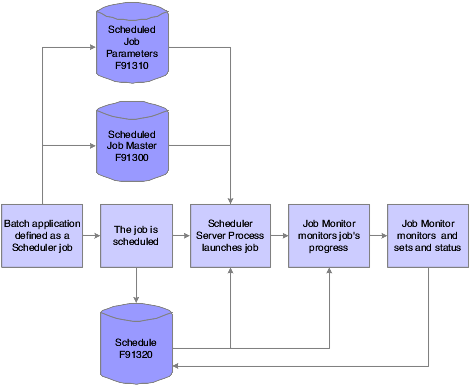Understanding the Scheduler Application
Occasionally, you might want to run batch jobs that take up a great deal of machine resources or that require users to be signed off after normal working hours. You also might want the flexibility to run jobs at scheduled intervals during the day or even periodically throughout the month or year.
The Scheduler application enables you to schedule batch jobs to run after hours or periodically throughout the day, according to a schedule that you define. You can schedule jobs by time (daily, weekly, monthly, yearly) or based on a specified period. You also can set up the scheduler to restart a job in the event of a job failure.
You can specify the server on which you want the job to run, as well as the time zone, regardless of the locale. The Scheduler system uses a modified version of Universal Coordinated Time (UCT), which counts the number of minutes, not seconds.
The following graphic illustrates the scheduling process:

When you define a scheduled job, the parameters of that job are stored in the Scheduled Job Master table (F91300).
After the job is scheduled, the system writes records to the Schedule table (F91320), indicating each time that the job should be launched. As the job runs, the Job Monitor monitors the progress of the job.